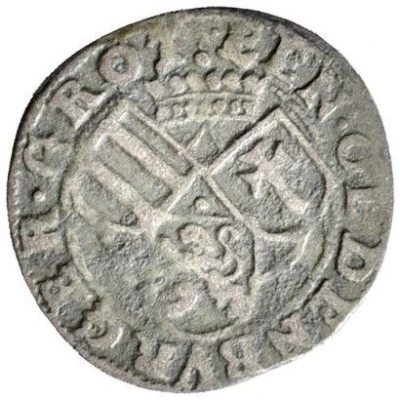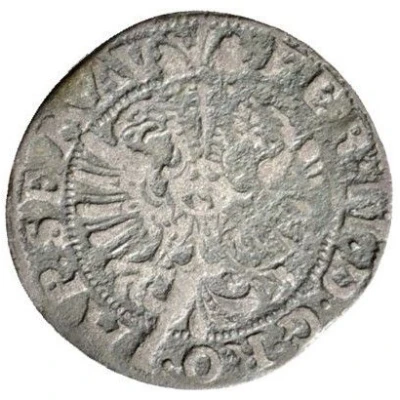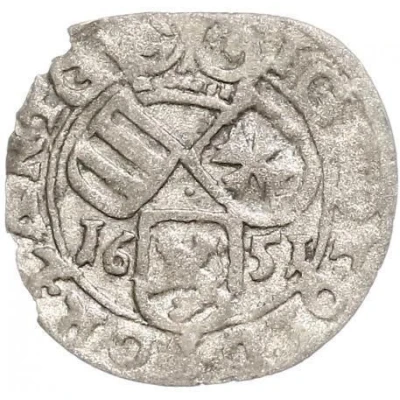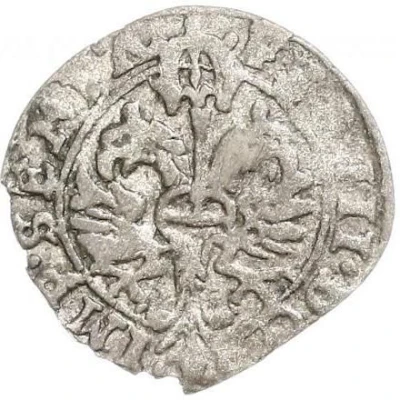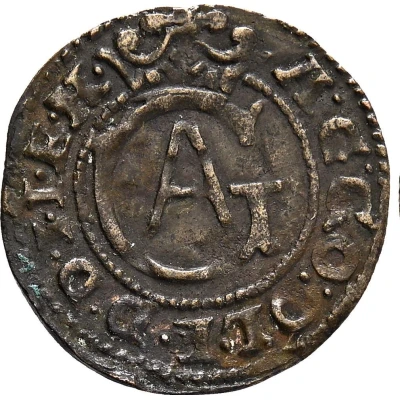
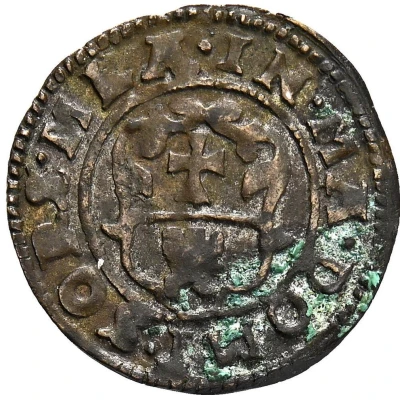

© Fritz Rudolf Künker GmbH & Co. KG, Osnabrück and Lübke & Wiedemann KG, Leonberg
Schilling - Anthony Gunter imitating Gustav Adolphus solidus ND
| Billon | 0.6 g | - |
| Issuer | County of Oldenburg (German States) |
|---|---|
| Count | Anthony Günther (Anton Günther) (1603-1667) |
| Type | Standard circulation coin |
| Years | 1629-1667 |
| Value | Schilling (1⁄144) |
| Currency | Thaler (1535-1773) |
| Composition | Billon |
| Weight | 0.6 g |
| Shape | Round (irregular) |
| Demonetized | Yes |
| Updated | 2024-10-05 |
| Numista | N#341895 |
|---|---|
| Rarity index | 100% |
Reverse
Cartouche containing small cross above a rampant lion right.
Script: Latin
Lettering: IN · MA · DOMI · SORS · MEA
Translation: My fate is in God's hands.
Comment
Though attributed by KM to Oldenburg, and called a schilling, this coin bears the lion of Jever and its size was similar to a 1/4 stuber coin of Jever, not a schilling which in Oldenburg was a large silver coin of 4 grams.It imitates low grade billon coins struck by Gustav Adolf of Sweden during his occupation of Elbing beginning in 1629 (see link). This means that attributions of this coin to the period of mintmaster Nikolaus Wintgens (1614-1622) cannot be correct, as the coin could only have been struck starting in 1629. This misattribution is probably due to the reverse legend, which was used on early coins of Anton Gunther's reign.
Interesting fact
One interesting fact about this coin is that it was imitated from the Gustav Adolphus solidus, which was a coin minted by King Gustav II Adolf of Sweden in the early 17th century. The Schilling coin was minted by Anthony Gunter, a counterfeiter who attempted to pass off his coins as authentic solidi, but was eventually caught and punished. This coin is a rare example of a counterfeit coin that was created to deceive people, and it highlights the importance of authenticating coins to ensure their legitimacy.
